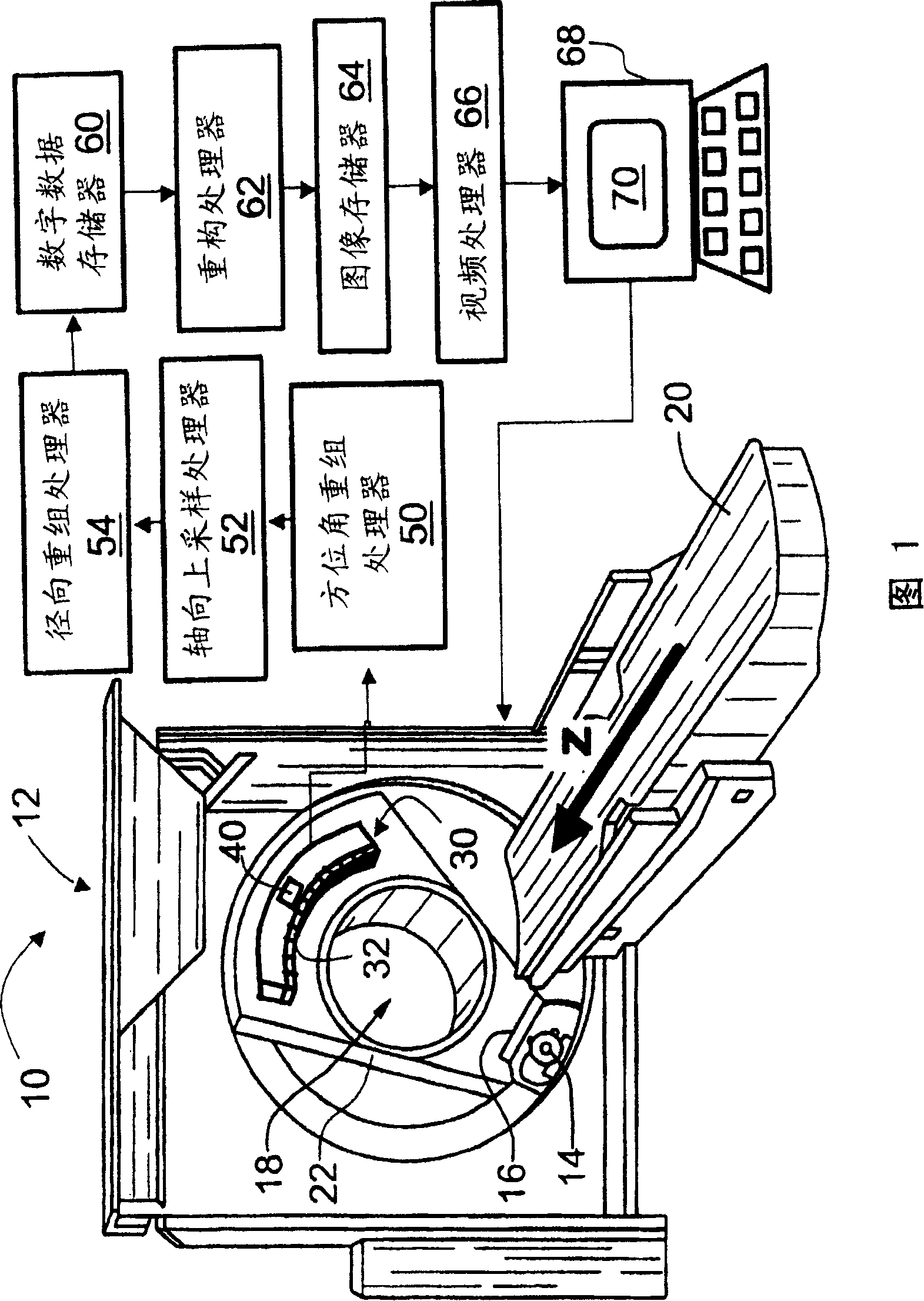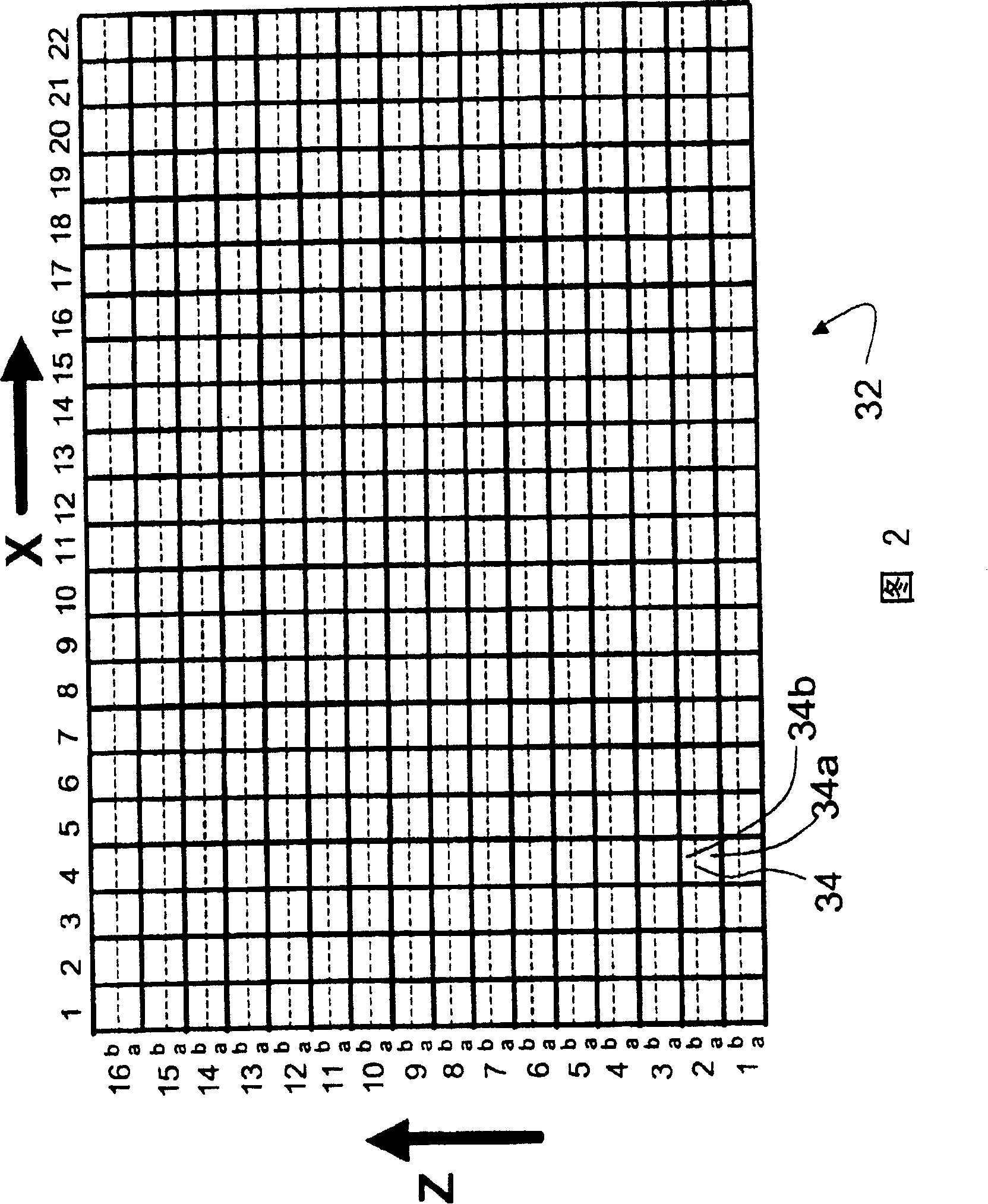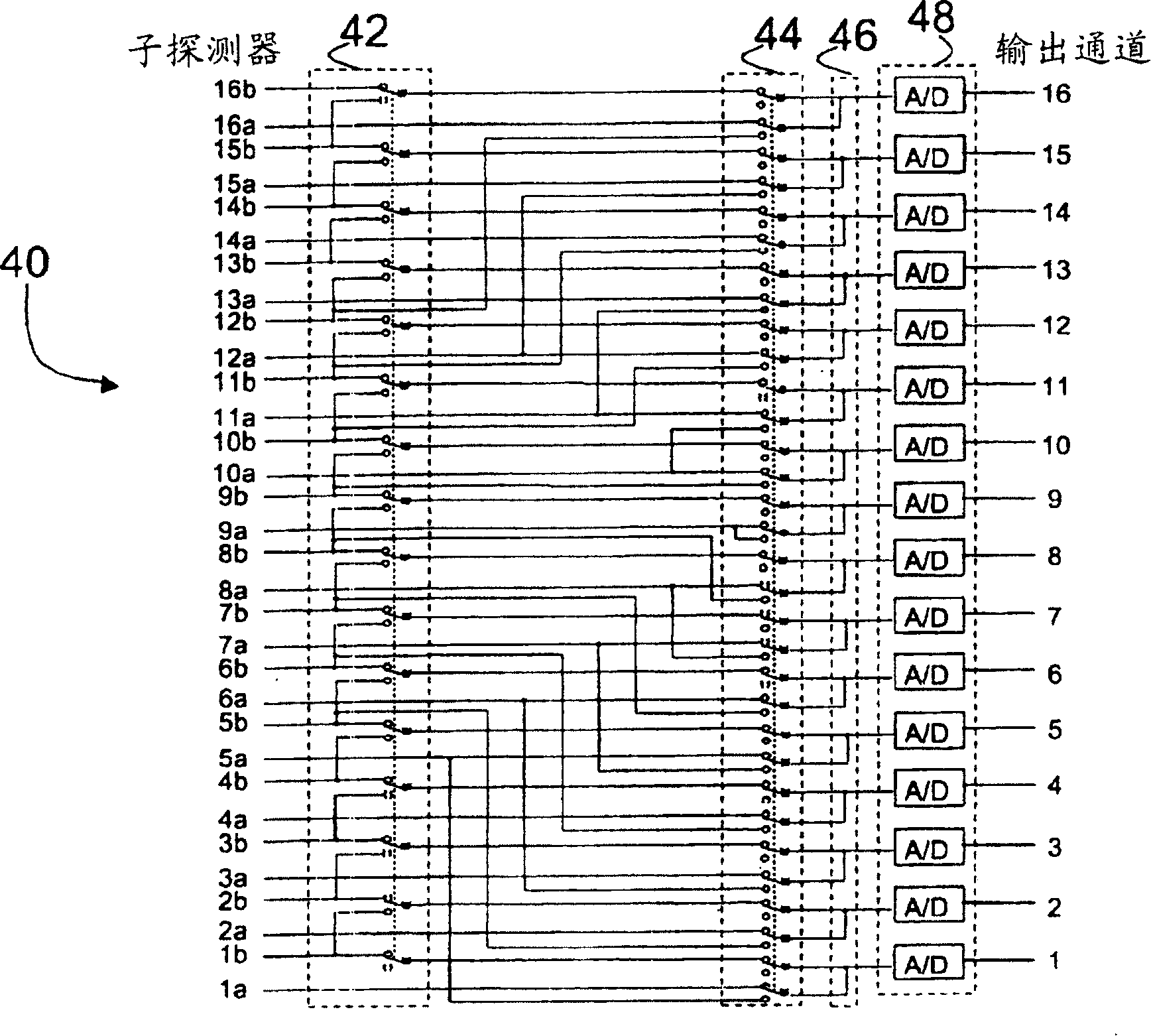Dynamic detector interlacing for computed tomography
A computer and detector technology, applied in the field of computed tomography, can solve the problems of reducing signal-to-noise ratio, increasing cost, complexity bandwidth, etc., to achieve the effect of increasing dynamic range, reducing the number and processing channels, and reducing complexity and cost
- Summary
- Abstract
- Description
- Claims
- Application Information
AI Technical Summary
Problems solved by technology
Method used
Image
Examples
Embodiment Construction
[0025] Referring to FIG. 1 , a computed tomography (CT) imaging apparatus 10 includes a CT scanner 12 having an x-ray source 14 and a collimator 16 that together generate a cone, wedge, or other shaped beam of x-rays that impinges into an examination region 18 . A subject (not shown), such as a patient, is placed on the subject carrier 20 and placed at least partially in the examination region 18 . Preferably, the patient body 20 is movable linearly in the axial or Z direction, while the X-ray source 14 is rotatable on a rotating gantry 22 .
[0026] In an exemplary helical imaging mode, gantry 22 rotates while subject body 20 advances linearly and axially to create a helical trajectory of x-ray source 14 and collimator 16 around examination region 18 . However, other imaging modes may also be used, such as a multi-slice imaging mode in which the gantry 22 is rotated while the subject body 20 remains stationary to create a circular trajectory of the X-ray source 14 to acquire...
PUM
 Login to View More
Login to View More Abstract
Description
Claims
Application Information
 Login to View More
Login to View More - R&D
- Intellectual Property
- Life Sciences
- Materials
- Tech Scout
- Unparalleled Data Quality
- Higher Quality Content
- 60% Fewer Hallucinations
Browse by: Latest US Patents, China's latest patents, Technical Efficacy Thesaurus, Application Domain, Technology Topic, Popular Technical Reports.
© 2025 PatSnap. All rights reserved.Legal|Privacy policy|Modern Slavery Act Transparency Statement|Sitemap|About US| Contact US: help@patsnap.com



